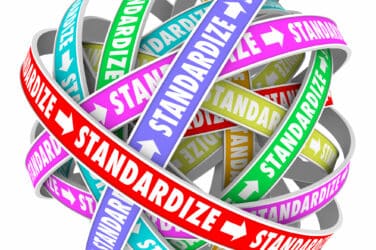So far, so good.
Wall Street brokers are breathing a collective sigh of relief so far as the U.S. Securities and Exchange Commission’s Tick Pilot program prepares to end its first full week of operation without so much as a hiccup. While the brokers and their vendors have had more than a year to get ready to prepare for compliance with the Pilot’s unique requires for trading certain symbols in nickel rather penny increments, there was still room for any myriad of problems to surface.
”So far, we haven’t heard of any brokers or trading centers experiencing difficulties complying with the new rules – and our fingers remain crossed that this radio silence will continue,” said Andrew Upward, head of market structure at Weeden. “We weren’t expecting trouble on Day 1, no, although we didn’t peg the odds at zero either.”
Wendy Dailey, senior vice president of business development at Dallas-based Capis, told Markets Media that her firm had been working with its order management system provider, Fidessa, as well as trading venues to ensure compliance as well as a smooth transition with the Tick Size Pilot.
“At this point, we have not had any issues with the Tick Size Pilot,” Dailey said. “We feel that industry participants had plenty of time to prepare. We are more concerned whether the implementation of wider spreads actually increases coverage and liquidity or just adds additional cost to the investor.”
There have been a few changes in symbology in the Tick Pilot so far – there are now 398 stocks in Test Group 1, 396 stocks in Test Group 2, 397 stocks in Test Group 3, and 1,193 stocks in the Control Group.
Upward told markets Media that the following 10 symbols went live Monday with the new quoting increments and for Test Group 2 stocks, the new trading increments as well.
For Test Group 1: JAKK; ISCA; FET; CFI and SGA
For Test Group 2: GBT; TTS; HUBS; RATE; ERN
Next Monday, October 10, Upward reminded that the nickel-based increments will go live for another 95 Test Group 1 stocks and another 95 Test Group 2 stocks.
Test Group 1 will trade under existing rules and can trade within the spread. Test Group 2 symbols will trade only in 5 cent increments and I certain cases only, with exceptions. The last group, Group 3, will trade in 5 cent increments as the other test groups but subject to a “trade-at” provision.
And it’s the Trade At group that presents the biggest challenge for the industry, Upward added. He said that the odds of trouble developing are much higher for Test Group 3 stocks given the extra coding work that is needed to comply with the trade-at prohibition.
Over the long term, Upward projected the risk of a problem developing with the new quoting and trading increments goes down considerably and will continue to go down with each day that passes without incident.
“The roll-out of Test Group 3 stocks in the weeks ahead still poses a big risk, however, for the reason I mentioned – the extra coding needed,” Upward said.
Capis’ Dailey said it too expected some market growing pains as clients get accustomed to the new pricing and trading exceptions.
“Part of providing our clients service is helping them stay in front of the affected names as they roll out each week. This could be updating limits on GTC orders, or contacting a client immediately when an order is rejected due to an invalid price.”
Cheryl Cargie, senior trader at Chicago-based Ariel Investments, agreed with Weeden’s Upward that as time goes on, the likelihood of a trading problem or issue rises. But she too hasn’t seen or heard of any issues – yet.
“Right now you have a handful of symbols trading – so everything is quiet and Ok,” Cargie began. “But wait until the middle of October or later when the symbol list grows then chances are we’re more likely to see an issue or problem arise.”





